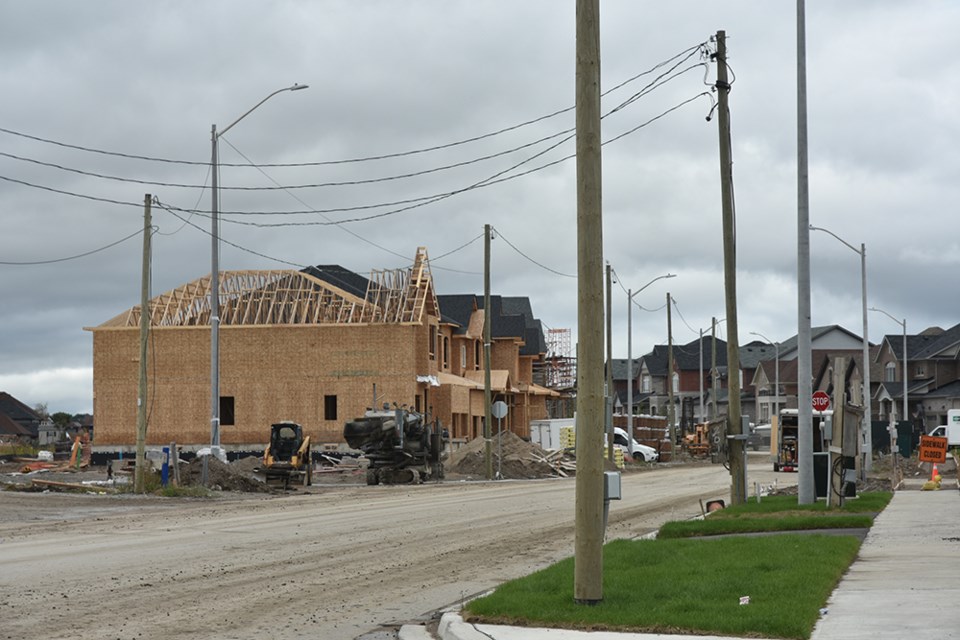Residents living on the 6th Line near the Innisfil Wastewater Treatment plant are frustrated as they continue to seek answers as to who is ultimately responsible for the devastating flood damage caused by a sewage spill that occurred in January 2020.
During an intense rainstorm in mid-January 2020, while the ground was still frozen, at least 13 homes along Line 6 were flooded with raw sewage after rainwater overwhelmed the existing pumping station.
Wally Malcolm, CEO of InnServices noted that at 4:30 a.m. on Saturday, Jan. 11, an alarm went off indicating high flows at Pumping Station 2 on Line 6. One pump was found to be clogged with rags and had to be pulled out and cleaned, but there was also obvious infiltration of stormwater into the system, overwhelming the capacity of the station.
Average flows at the station were 32 litres per second; during the peak of the storm, they reached 200 litres per second.
At least five trucks were sent in to start hauling raw sewage from the pumping station to the wastewater treatment plant – but they couldn’t keep up.
Scott MacKenzie, in the town’s department of development engineering, said that the issue appeared to be related to a sanitary sewer line in the Sleeping Lion subdivision on Line 6, in place but not hooked up to any homes.
The line had been installed as part of 'pre-servicing' for a future phase of the subdivision; a plug was in place to block any connection between the pipe and the active sewer main, but failed to block the inrush of stormwater.
Residents addressed their concerns to council at the Jan. 15, 2020 meeting, and received a commitment that the town would prevent this type of incident from happening again. Councillors approved bringing forward two requests to town staff: to hold a debriefing, to look at improvements to customer service responses; and to investigate a Back-flow Prevention Grant pilot project.
The solution has also involved replacing the plugs and physically blocking the unused line with a brick wall, to prevent future issues.
But residents are still left wondering who is to blame for the incident and are frustrated by what they see as a lack of accountability from the town, InnServices, and developer The Cortel Group.
The new sewer line and the plug that failed, allowing stormwater to pour into the sewer main and ultimately overwhelm the pumping station, were installed by Cortel Group, but the developer has pointed out that it is the Town of Innisfil that approved and inspected the line, and that the plug installed was to code.
InnServices has disclaimed responsibility because the new line had not yet been assumed by the municipal corporation that operates the town's water and sewer systems, and the problem was not with the design of its equipment.
A 2020 report from Inn Services noted, “The pump station itself performed as it was designed,” but that “there was excessive and significant flow from an unoccupied, un-assumed phase of a subdivision upstream. This phase had been pre-serviced and was not supposed to be connected to the live sanitary system.”
At this point, none of the three parties - the Town, InnServices, or The Cortel Group - have accepted responsibility for the estimated $1.75 million in damages caused by the spill. Those damages have been largely covered by private insurance, leaving homeowners to deal with deductibles and increased insurance premiums.
One resident has written to the province, suggesting, "Whomever made the decision to connect the unoccupied and unassumed phase of that subdivision’s upstream sanitary system to the InnServices’ live sanitary system has to be held accountable for damages that decision subsequently caused."
There is also concern over further development planned for the Sleeping Lion subdivision. In the June 23, 2021 meeting of council, 362 new homes were approved to be built in Phase 3 of Sleeping Lion, in advance of completion of the new Sewage Pumping Station. The station expected to be operational in November 2021.
Part of the problem, residents suggest, lies with the design of the stormwater management systems within the subdivision, and there are concerns regarding the proposed Mobility Orbit high-density development, planned for Line 6.
When contacted by InnisfilToday, the town confirmed that the stormwater management ponds for Phases 1, 2, and 3 of the Sleeping Lion subdivision have been "substantially" completed, and that more stormwater management ponds will be added for the Orbit-related developments.
"Immediately following the events of January 11, 2020, the Town and InnServices acted quickly to replace sanitary plugs within the sanitary system and installed a brick and mortar wall as a secondary feature to block off the development from the main system until the houses within the Sleeping Lion subdivision were completed," said Lee Parkin, the town's manager of legal & clerk services.
In addition, the town adopted a Backwater Valve Grant Pilot Program, which provided eligible residents up to $1,000 for the installation of a backwater valve. A financial update presented on August 11 indicated that there had been little interest and uptake in the pilot project.
As for who is to blame, the town could not comment.
"Given that this matter continues to be with our insurer, the Town and InnServices cannot comment on ongoing litigation matters, including cause and compensation, but can provide that Staff, the MECP, and the Town’s insurer have completed independent investigations and each determined that the Town’s infrastructure performed as it should and that Staff responded immediately and efficiently," said Parkin.
The town maintains that the timing of the construction of the roads, pipes, and ponds within the development followed the typical construction process.



